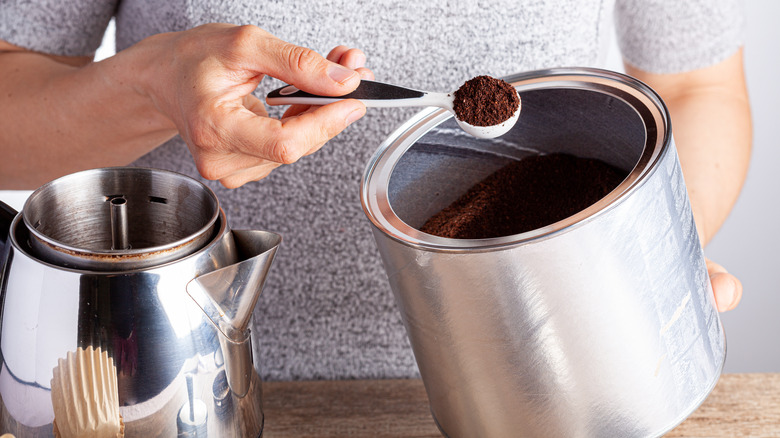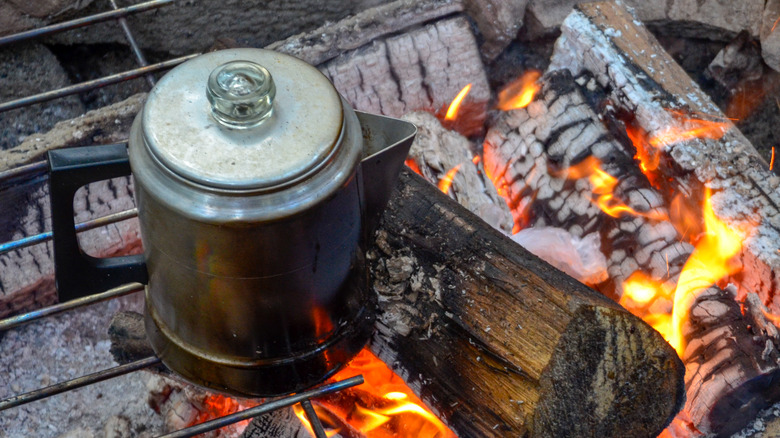Why Percolator Coffee Tastes Different From Other Brewing Methods
If you've ever been camping, chances are you've had percolator coffee. That dark, steaming liquid that your grandpa poured out of a tattered enamel kettle with creosote creeping up the sides may have been one of the strongest cups of coffee you've ever had. Percolators are old-school coffee machines. Designed for ease of use and a strong brew, this brewing method outdates almost every modern coffee brewing method, from drip pots to espresso machines. Many who grew up with percolators on camping trips or at home know that this brewing method is special in its own way.
Though not nearly as popular as they once were, thanks in part to the emergence of home drip machines, percolators maintain a small dedicated following that help keep the product alive. Since their emergence in the 19th century, percolators have become fixtures in many American households. Their continued sales are undoubtedly partially influenced by nostalgia and its ability to brew a robust cup of joe.
The popularity and convenience of other brewing methods, plus the rise of specialty coffee, have toppled the once mighty percolator from its status as the go-to American coffee pot. However, those who have held out and those interested in this classic, unpretentious brewing method will find the coffee brewed from a percolator tastes different than anything else — provided you get the technique right.
The water in a percolator gets extremely hot, creating a fuller extraction of the beans
Despite its detractors who state rather broadly that percolated coffee is not as "balanced" as one you'd get from a pour-over, taking time to understand your percolator will lead you to a great cup of coffee. The engineering of a percolator is incredibly simple. You have a perforated canister that is attached to a long straw. The canister gets filled with coffee grounds, and the lower chamber of the percolator is filled with water. The cover goes on, and the percolator, either stovetop or electric, is set over heat. As the water heats inside the percolator, it is forced up through the straw and into the canister containing the coffee grounds.
The coffee will cycle through the grounds again and again until it reaches the desired strength. If you're not paying attention, there is the possibility of that over-extracted coffee people warn about. However, if you are attentive and maintain consistent heat throughout the process, you're going to get a cup of coffee that is strong but has a very smooth and creamy flavor. The heat provided by the percolator is higher in temperature than that in a drip machine, so the flavor you're getting is from a fuller extraction of the beans — meaning a stronger, well-rounded cup of coffee.
So keep faith in the old percolator, for it has all the potential to continue to make the same great pot of coffee your grandparents enjoyed.

